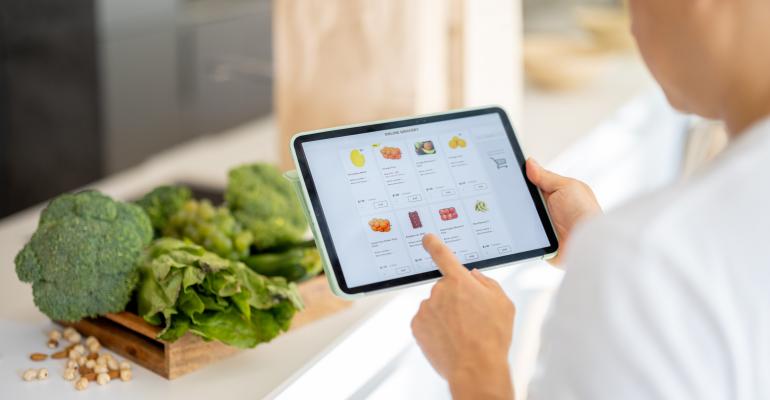Most shoppers now buy at least some of their groceries online, as more consumers cut back on in-store purchases, according to a new report from PYMNTS.com.
The Changes in Grocery Shopping Habits and Perceptions report found that just 44% of shoppers now make the majority of their common grocery-item purchases at physical stores, compared with 63% who did so in early 2020.
The report, which surveyed 2,426 consumers in December, found that 77% of shoppers said they had reduced their in-store purchases in at least one category.
Not surprisingly, consumers were most likely to cut back on buying nonfood items in-store as these products have proven to be widely available and convenient to purchase online. Nearly half of consumers —48.2% — said they are buying less cleaning supplies in-store, and nearly as many said they are buying less personal and healthcare products (48.1%) and paper products (47.2%).
Most of the remaining consumers said their in-store purchases of those categories have remained flat.
Among the food categories that have seen a reduction in in-store purchases were frozen foods (36% of consumers report buying less in-store) and canned foods (34.6% buying less).
The report also found that the average number of items purchased per visit to a physical grocery store fell to four, down from six before the pandemic.
The cutbacks spanned across age groups. The oldest Millennials were the most likely to reduce their in-store spending, at 84%, and nearly three fourths — 73% — of baby boomers and seniors cut back as well.
The report also found that older consumers were more likely to shop exclusively in-store, while younger consumers were more likely to shop both online and in-store. Before the pandemic, younger consumers were already much less likely to shop exclusively in-store, but that trend has significantly increased, with 35.7% of Millennials and 41.1% of Gen Z now reporting that they only buy groceries in a physical store.
Convenience is the primary motivation for shoppers who have transitioned to shopping for more groceries online, cited by 61.1% of consumers. It was followed by higher prices or a lack of benefits/deals (53.9%) and fewer products/brand options (41.6%).
Interestingly, the report found that younger consumers tended to be motivated more by convenience, while older consumers tended to be driven online by prices and deals.
“The pandemic upended how consumers shop for everyday items,” the report concluded. “Retailers and grocers must adapt to this increasingly digital-first paradigm to meet shoppers where they are — and where they want to be.”





